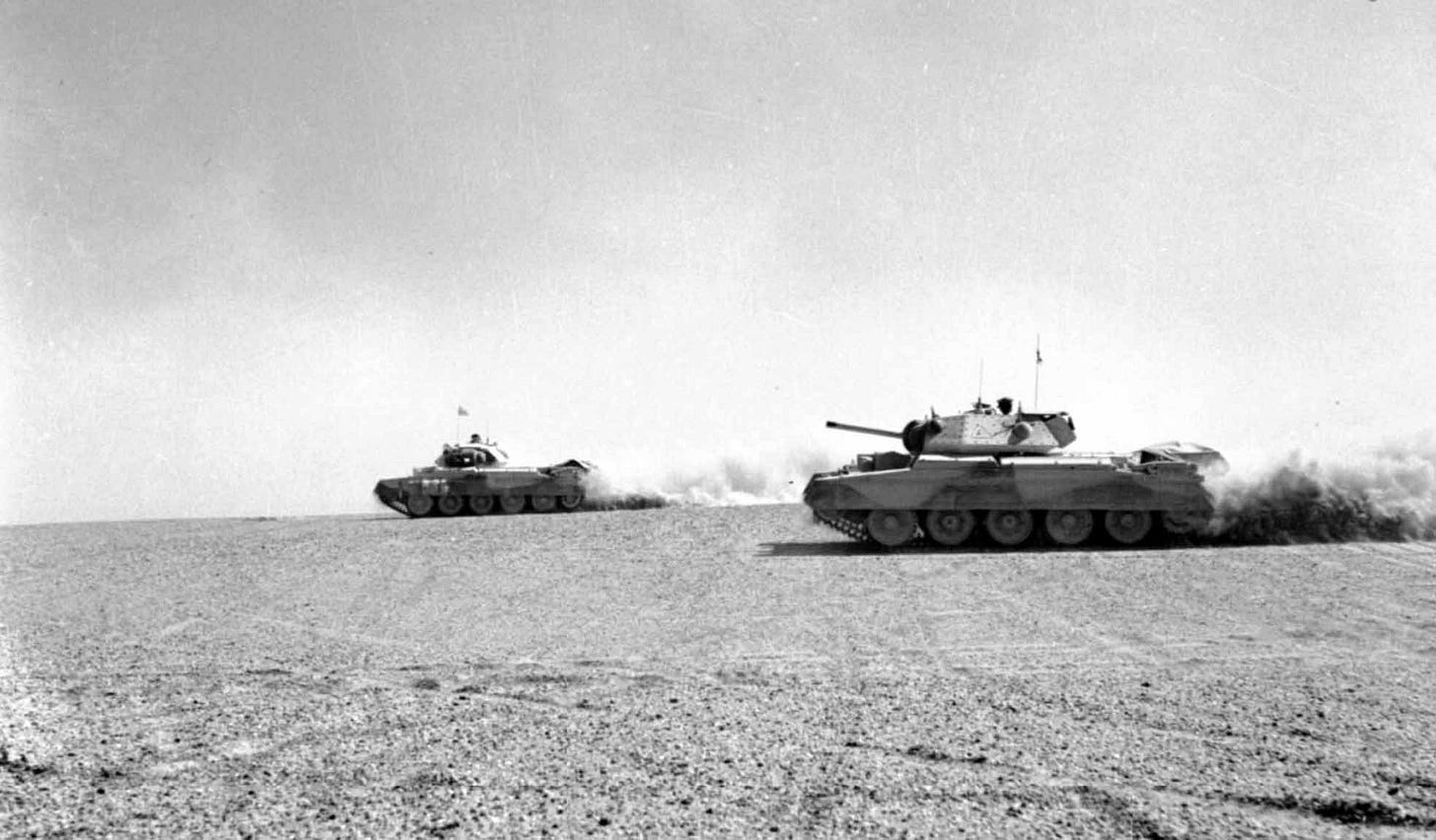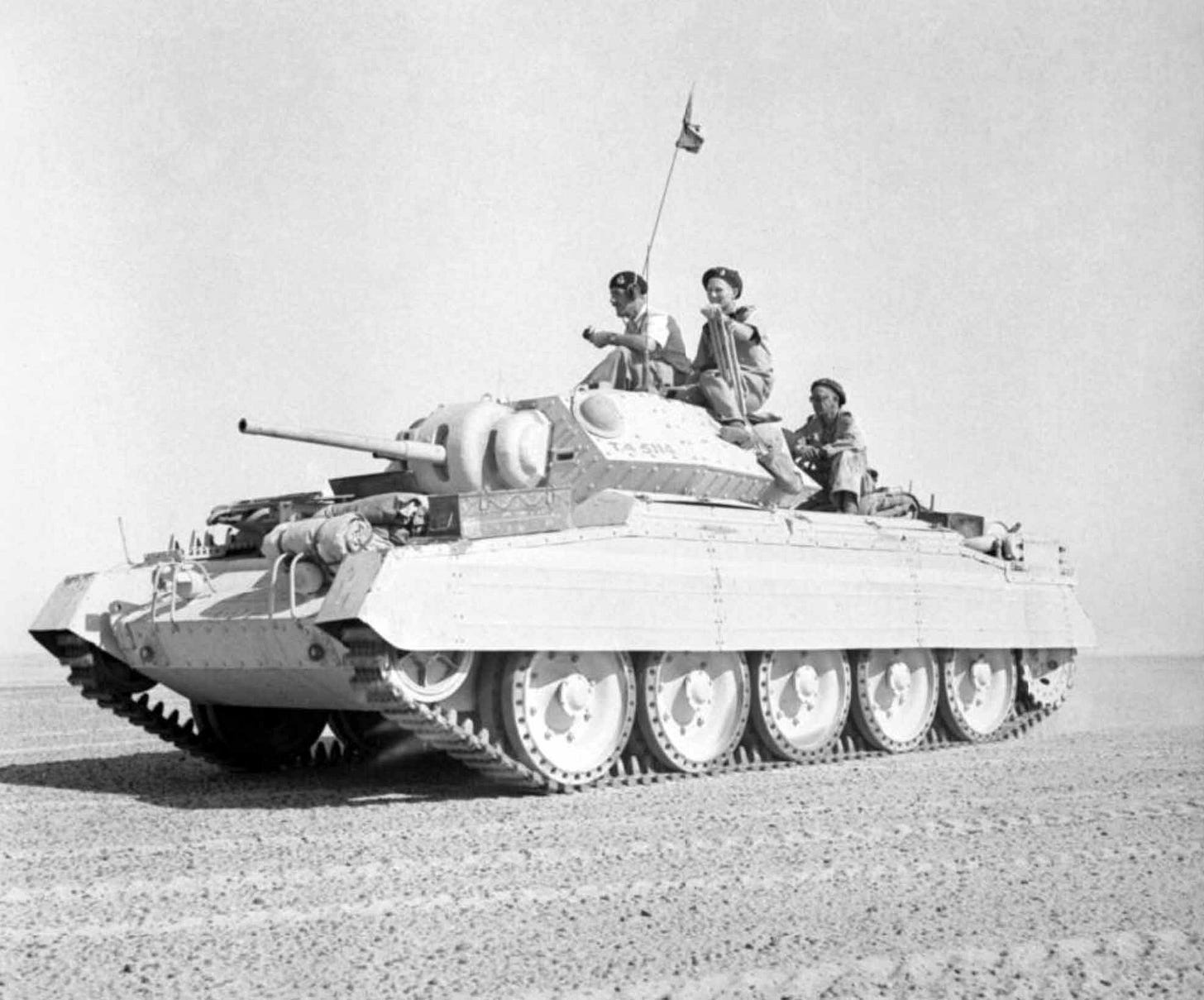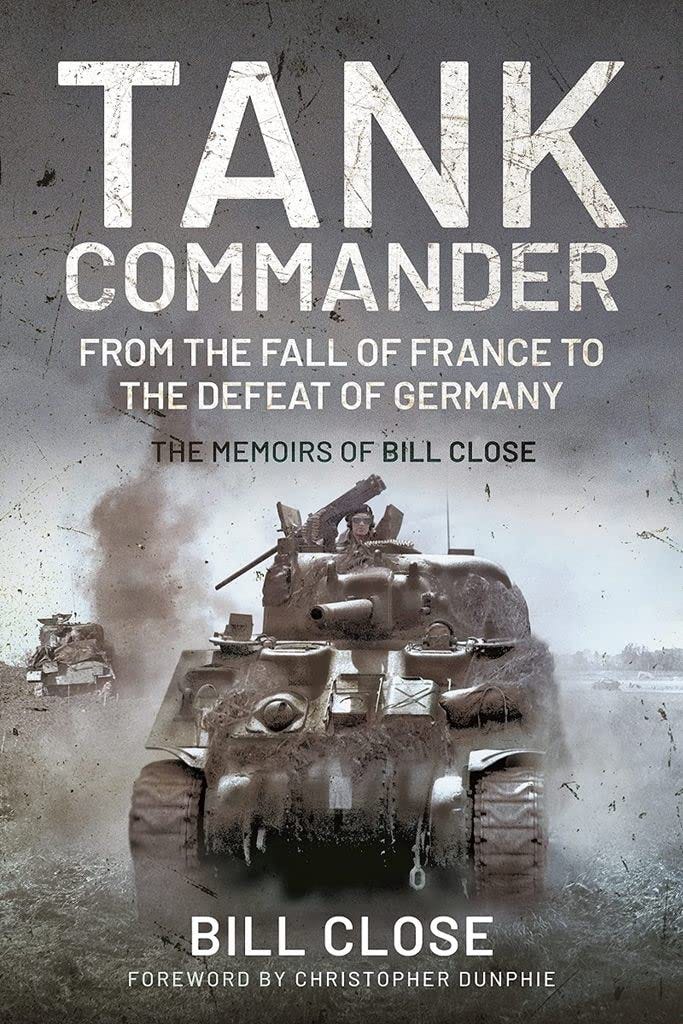'Tank Commander'
26th March 1943: A vivid account of a tank battle 80 years ago today, during the Mareth Line 'Left Hook'

Bill Close joined the Royal Tank Regiment in 1933 as a trooper. He was progressively promoted through the ranks until he was commissioned in the field in 1942. He commanded a tank in France in 1940, in Greece in 1941, in North Africa from 1941 to 1943, in Normandy in 1944 and in Germany in 1945. His tank was hit eleven times during the war - and he was forced to bale out on more than one occasion. But he proved to be extremely lucky and survived to write this unique memoir. Tank Commander: From the Fall of France to the Defeat of Germany is an absolute classic for those wanting to understand tank warfare from the Allied perspective.
The following episode occurred while Close was commanding a tank in a ‘light squadron’ as they took part, as part of the ‘New Zealand Corps’ in Montgomery’s “Left Hook” during the Mareth Line battles. This wide detour into the desert aimed to circumvent the defensive line and bring a large force into the rear of the German positions. They had made swift progress until they were discovered - but now the improvised German defences were becoming more organised:
On 26 March Alec and I attended the CO’s ‘O group’. We were told that a concerted attack by the whole division would be made later that day. The tanks would lead the attack with all three regiments involved. We were to form up in line: Nottinghamshire Yeomanry on the right, us in the centre and the Staffordshire Yeomanry on the left. The light squadrons would be in front with New Zealand infantrymen riding on the backs of the tanks, followed by the Sherman squadrons.
We were to advance ‘Balaclava’ fashion behind a massive artillery barrage and would also be supported by tank-busting aircraft of the desert airforce, which would be in direct wireless contact with the tank squadrons.
All this sounded terrific, but when I returned to the squadron and briefed my crews it brought forth quite a few ribald remarks, Buck Kite and Geordie Reay being particularly caustic.
We were due to commence the attack at 4 p.m. and just as we started to form up a dust storm sprang up suddenly, as they often do, making visibility rather difficult.
Our first objective was a line of defences about 1,000 yards from our start line. We reached this without any great difficulty, the German gunners still rather shaken and dazed by the barrage, making no effort to engage us. As we advanced we engaged the gun emplacements with machine-gun fire; in some cases we crushed the guns by running over them.
However, shortly after we had bypassed the first defences, the German anti-tank gunners came to life, hitting several Shermans, which burst into flames. The crack of 88mm guns and the chatter of sponsons added to the noise and chaos. Two Crusaders on my left were hit, then I saw Geordie Reay’s tank on my right hit. It ended up on its side in a concrete emplacement. Geordie’s crew seemed to bail out all right and took shelter in the emplacement, no doubt relieved to be out of it for a while.
I felt a crack on the front of my tank but a reassuring yell from one of my crew confirmed that we hadn’t been penetrated. Peering out of the turret I was so busy looking for targets that I failed to see a German infantryman standing up in his slit trench taking aim at me with his machine gun. My good luck was still with me: he must have been on single shot, for the first round hit the wireless mast on my tank and whined harmlessly past my head. The German was summarily dealt with by one of the New Zealanders on the back of my tank.
As we moved through the enemy defences quite a number of Italians came out of their slit trenches with their hands up. Some of the New Zealanders leapt off the tanks and went into close-contact action with their rifles and bayonets. Alec Doig was some way to my right and seemed to be in the centre of a line of enemy anti-tank guns with their crews coming to life and starting to man their guns. I saw his tank get hit, some of his crew bailed out, but shortly after I received a message over the air that Alec had been badly wounded.
I was at last in command of the squadron, though not in the circumstances I would have wished. We were now in the middle of the enemy defensive position. I could see terrified infantrymen cowering in their trenches, some gun crews lying still beside their guns.
I became rather excited and decided to throw a few hand grenades - we suddenly had a box of six in the turret. Not having practised throwing grenades from the turret of a moving tank, I forgot that my gunner had traversed the gun. My first grenade dropped among the New Zealand infantrymen on the back of my tank and bounced off. No one was hurt, but one of the New Zealanders pointed his Sten at me, indicating what would happen should I try it again. I stuck to commanding the tank after that.
The enemy anti-tank guns were becoming more and more of a problem. Several Shermans were hit and burst into flames. Some of their crews were able to get out, but not all.
We had hoped to be able to call on the RAF Hurricanes and Kittyhawks but our observer, who had been in Alec’s tank when it was hit, was also a casualty. Nevertheless, they were coming over us in waves and taking on targets to our immediate front. I only hoped that they were good at tank recognition.
Atabout 6 p.m. elements ofthe 1st Armoured Division started to move through our positions and we felt we could relax a little. The position was still very confused and although we appreciated that 1st Armoured Division were taking over the attack, 8th Armoured Brigade had orders to remain in the field more or less in open battle order.
I had been expecting orders to leaguer so that a decent meal could be brewed up and the squadron bedded down. Our casualties had been quite considerable - the light squadron had lost seven tanks, the heavy squadrons rather more. But it was not to be and we remained in our battle positions all night.
At first light I was called over to Colonel Pyman’s tank. ‘Bill, the rear units of 1st Armoured Division are reporting that they are being attacked by panzers. Take your squadron out to the flank and find out what’s going on.’
I moved out with two troops and proceeded rather cautiously towards the foothills, where I could see brilliant flashes from enemy tanks - about six or seven in good hull-down positions. I reported back to the CO and suggested that a troop of Shermans could deal with them. We would continue to engage them until the heavies came up to support us.
As we tried to tuck ourselves into some sort of hull-down position - we were still quite exposed - my troop corporal’s tank was hit and burst into flames. Two members of the crew were able to bail out.
I was extremely relieved when two troops of Shermans from B Squadron came up and very quickly dealt with the enemy tanks, although not before losing three of their own.
Although we practically surrounded the enemy, pockets of determined Germans continued to fight on throughout the day until finally forced to surrender to a Maori battalion. In this particular action one of the Maori lieutenants received a posthumous Victoria Cross.
This excerpt from Tank Commander: From the Fall of France to the Defeat of Germany appears by kind permission of Pen & Sword Books Ltd. Copyright remains with the author.





